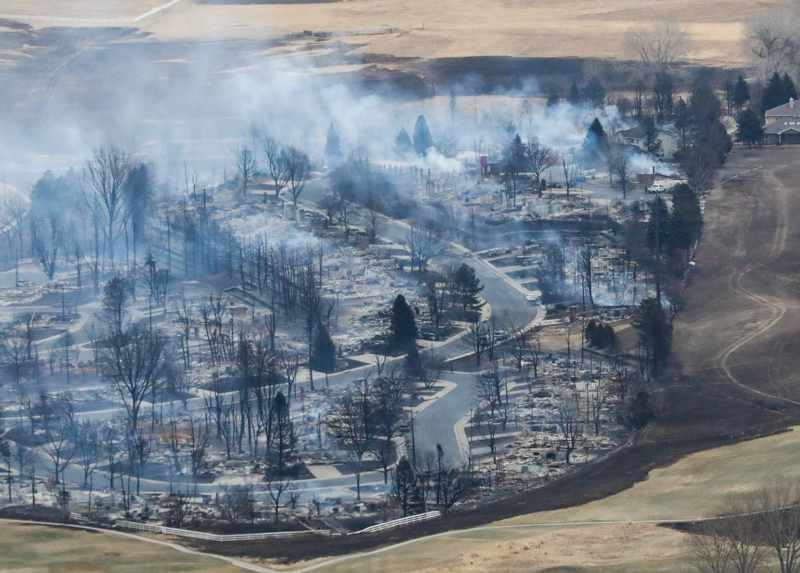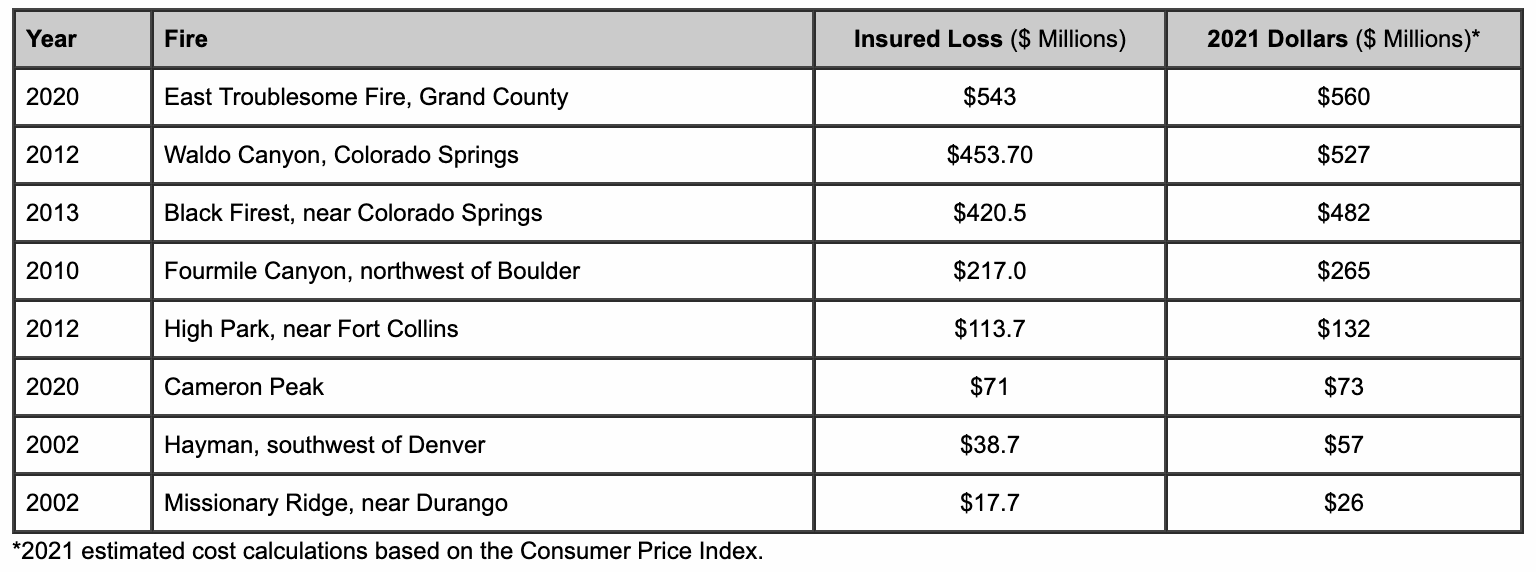Marshall Fire in Boulder, Colorado destroyed ~1,000 properties

The severe wildfire activity in Boulder County, Colorado is now estimated to have destroyed roughly 1,000 properties, with officials preliminarily citing 991 residential properties as completely destroyed, with another 127 damaged.
Photo from: Hart Van Denburg / CPR News
These are not thought to be the final figures from the late season wildfire outbreak in Colorado last week, that saw fast-moving, wind-driven wildfires burn in the Boulder County area, to the north of Denver.
The Marshall Fire, which burned the 991 homes according to the Boulder County sheriff’s office data from 1pm on January 1st, is thought likely to become the most costly wildfire in Colorado history.
That’s on both an economic and insurance market loss basis, with the previous most costly Colorado wildfire resulting in around $560 million in insured losses, in 2021 dollars.
Average home values in the areas of Boulder, Colorado where most of the wildfire damage occurred are between $600,000 and $800,000, according to open data sources.
On that basis, the Marshall Fire could drive insurance market losses approaching $700 million, perhaps higher, once other structures and commercial properties are considered.
Although, some are raising questions over the ability of homeowners to recover the full reconstruction cost value of their homes, given runaway property prices and inflation in the state are said to have accelerated beyond the property values stated in many insurance contracts.
The final toll for the insurance and reinsurance industry is likely to be higher still than the simple reconstruction value of properties and structures that were totally destroyed.
With tens of thousands evacuated from the blaze region and adding in the eventual costs of insurance claims related to smoke damage, additional living expenses, damaged as well as destroyed structures, plus costs related to personal belongings and vehicles, it’s easy to imagine the industry loss rising further towards the billion dollar mark.
The Bounder County sheriff’s office stressed that the 991 structures destroyed and 127 damaged are not final figures, so more data on that is expected to be available once FEMA has surveyed the damage, to help insurers in assessing the industry loss.
For now, the Boulder County authorities have published a list of properties which is accessible here and should help insurers and reinsurers in establishing their potential exposure to this wildfire outbreak.
Data on historical wildfire industry losses in Colorado can be seen below, sourced from the Rocky Mountain Insurance Information Association:

The Marshall Fire caused a significant amount of property damage for a blaze of only 6,000 or so acres, reflecting the importance of location in driving fire losses.
Far larger wildfires have burned in Colorado but caused much smaller losses, but the location of this blaze and the speed with which it spread through residential communities, has made the Marshall Fire the most destructive in Colorado history by a factor of around two.
The fires broke out on December 30th, as extremely warm and dry conditions, combined with down-slope wind storms drove weather conditions conducive to wildfires.
The fires have been called exceptionally rare for the time of year by some, given their wind-driven nature and the particularly dry conditions.
A snow storm brought the blazes under control by the end of the year and prevented further significant damage from being experienced.








